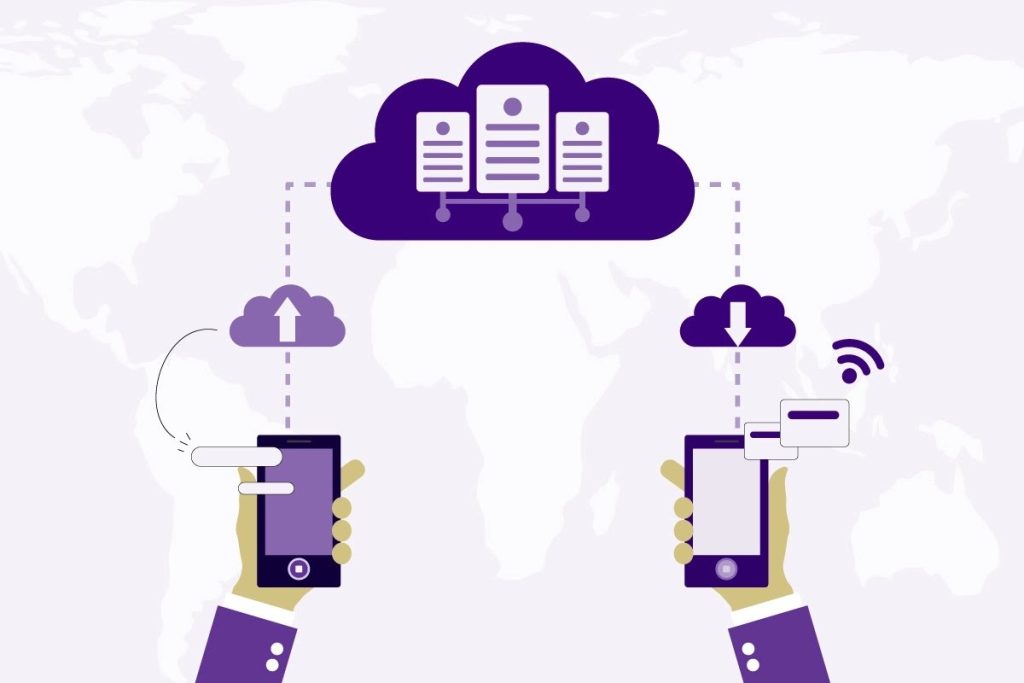Are you worried about disruptions in your business communication due to natural disasters, cyberattacks, and unforeseen events?
Your business can face many problems, such as losing revenue, valuable data, reputation, and other extreme cases. You should have a robust business continuity plan to mitigate these solutions.
To eliminate these problems and have uninterrupted communication, businesses can use VoIP solutions during unexpected events or in extreme cases. The robust features of cloud telephony help revolutionize your business and reach new heights.
This blog will discuss the benefits, best practices, and future cloud telephony trends and innovations in business continuity and planning.
Without wasting any time, let’s dive into the article!
Understanding Cloud Telephony
Cloud telephony, or cloud calling, is an internet-based communication system. It uses technology that converts analog voice signals into packets and transmits them through the Internet.

Cloud-based phone service uses VoIP(Voice Over Internet Protocol) to route the call once the number is dialed. cloud telephony operates on data centers managed by cloud communication service providers, unlike traditional telephone systems that depend on physical infrastructure.
With cloud-based telephony, businesses can access their phone systems and communication tools from anywhere worldwide, making it an ideal solution for business continuity planning.
features
- Interactive Voice Response System (IVRS)
- Dialers
- Call Analytics
- Call Recording
- Custom Dashboards
- Cloud Telephony Integrations
- Agent CTI
- Click to Call functionality
- Call Forwarding
Key Benefits of cloud telephony in business continuity planning
Cloud telephony has robust features and communications that help businesses in the long term. Some of the major benefits of cloud telephony include:
1. Reliable communication
Cloud-based telephone systems are more reliable than traditional landline phone networks because they don’t rely on physical infrastructure like wires or cables, which can be damaged by natural disasters such as floods, storms, fires, etc., making them much less susceptible to disruption from external factors.
Additionally, since these services run over the internet instead of through physical lines, you won’t have downtime due to outages caused by electrical blackouts either; meaning you always have access no matter what happens outside your office walls
2. Geographics
Cloud telephony solutions offer geographic flexibility, allowing businesses to maintain communication regardless of location. This is particularly beneficial for organizations with multiple offices or remote workers.
Employees can seamlessly switch to remote work in a disaster and continue their operations without disruption. Cloud telephony enables geographically dispersed teams to collaborate effectively and ensures that business processes can continue even if a specific location is affected by a crisis.
3. Remote work Enablement
Working remotely has become increasingly important in today’s business landscape. Cloud telephony plays a significant role in enabling remote work during a crisis. It enables remote work capabilities that traditional landlines simply cannot provide.
With features such as call forwarding and voicemail transcription (which allows users to access messages via email), employees can remain connected with customers and colleagues regardless of where they may be located at any given time – so long as an internet connection is available!
These features make it easier for organizations that need staff working remotely without sacrificing quality customer service or internal collaboration efforts. Also helps them maintain productivity even when travel isn’t possible due to unforeseen circumstances beyond anyone’s control.”
4. Disaster Recovery
Disaster recovery is a critical aspect of business continuity planning. Cloud telephony solutions offer robust disaster recovery capabilities, ensuring businesses can quickly recover and resume operations after a crisis.
With cloud-based phone systems, businesses can easily redirect calls to off-site locations or employees working from home. This minimizes the impact of a disaster on customer experience and service delivery. Cloud telephony also allows organizations to quickly restore service for their customers, keeping their business running smoothly during a crisis
Best Practices for Implementing Cloud Telephony in Business continuity planning

You should be careful while implementing cloud computing for business for continuity and disaster recovery planning. To get the best business outcomes, you should follow the recovery strategies and practices to ensure seamless communication, uninterrupted service, and efficient disaster backup and recovery.
1. Assess Risks and Communication Needs
Before implementing cloud telephony, organizations should assess the potential risks and communication needs during a crisis. This includes identifying the impact of a disaster on different communication channels and solutions, such as auto dialers, Interactive Voice Response (IVR), and Computer Telephony Integration (CTI).
Understanding these risks and their impact on business communication is crucial for designing an effective business continuity plan.
2. Prioritize Critical Communication Channels
Not all communication channels are equally important during a crisis. Organizations should prioritize critical communication channels based on their impact on customer experience and service delivery. This ensures that the most essential communication channels are given priority in the business continuity plan.
By identifying and prioritizing critical communication channels and using information systems security, businesses can minimize the impact of a disaster on their operations.
3. Automate Customer Service Delivery
Automation plays a crucial role in business continuity planning. Cloud telephony solutions offer features such as cloud-hosted IVR (Interactive Voice Response), which allows customers to access information and resolve problems through self-service options.
Businesses can maintain service levels with minimal human intervention by automating customer service delivery, even during a crisis. Administrators can configure the cloud-based IVR system to route incoming calls to agents working from remote locations, ensuring uninterrupted customer support.
4. Run Outbound Marketing Campaigns
Business continuity planning should not only focus on internal communication but also on driving sales and generating revenue. Cloud telephony solutions enable businesses to run outbound marketing campaigns even during a crisis.
With cloud-based telephony software, organizations can efficiently manage outbound calls and switch to voice broadcasting solutions for large-scale voice campaigns. This ensures that marketing efforts continue and revenue generation remains unaffected in challenging circumstances.
5. Focus on Data Security and Backup
Data security and backup are critical aspects of business continuity planning. Organizations should choose a cloud telephony provider that offers reliable data backup solutions and ensures the security of customer and corporate data.
Storing data on secured, virtual, and distributed servers mitigates the risk of data loss during a crisis. Robust data backup practices enable businesses to minimize communication downtime and deliver seamless customer service in emergencies or disasters.
6. Unified Communications
Unified Communications (UC) is essential to a comprehensive business continuity plan. Businesses can ensure seamless communication and collaboration during a crisis by integrating various communication solutions and channels.
Unified Communications platforms allow employees to connect with customers through different channels efficiently. Cloud-hosted UC solutions enable organizations to maintain omnichannel customer service delivery, ensuring that communication remains uninterrupted across various channels.
7. Test and Monitor the Business Continuity Plan
Testing and monitoring the business continuity plan is crucial to ensure its effectiveness and efficiency. Organizations should thoroughly test their cloud telephony systems and communication tools to ensure seamless functionality during a crisis.
Business continuity plans are regularly monitored and reviewed to identify gaps and areas for improvement. By performing this ongoing evaluation, the organization ensures that the plan remains current and aligned with its evolving needs.
Future Trends and Innovations of cloud telephony
Digital evolution has changed technology greatly and also transformed cloud telephony. As we move forward into the technological future, cloud telephony has a lot of possibilities and will continue to evolve.
Some of the future trends of VoIP in business continuity planning may include:
AI-powered integration
AI integration is expected to revolutionize internet-based telephony and business continuity planning. AI-powered virtual assistants and chatbots can enhance customer service delivery by providing personalized and automated assistance during a crisis.
These intelligent systems can handle a high volume of customer interactions, ensuring businesses can maintain service levels even in challenging circumstances.
Advanced Analytics and Reporting
Cloud-based telephony creates a lot of data like user login credentials, call recordings, and customer interaction information. With the advancement of AI-driven technology, businesses can leverage large amounts of data through analytics software for business continuity planning.
Businesses can use analytical tools to identify patterns, trends, and areas of improvement for their business plans. Real-time reporting and analytics enable businesses to make data-driven decisions, optimize communication strategies, and enhance their overall disaster recovery capabilities.
Analytics can also be used by organizations looking proactively manage costs associated with running such networks more efficiently. Thus, they can better allocate resources across all communication and collaboration areas throughout the enterprise environment(s).
Integration with Collaboration Tools
Integration between cloud telephony and collaboration tools is another trend that is gaining momentum. Business phone lines can streamline communication and collaboration during crises by combining telephony services with collaboration platforms.
This integration allows employees to seamlessly switch between voice and video calls, instant messaging, and file sharing, ensuring effective teamwork and coordination.
Enhanced Security Measures
Due to the growing number of cyber attacks, data breaches targeting public/private sector entities, enhanced security measures are becoming increasingly important in protecting sensitive data.
Cloud providers now offer sophisticated encryption protocols that encrypt information stored within virtual machines, ensuring only those who should have access receive proper authorization before gaining entry into respective databases containing valuable customer-relevant information, etc.
Many vendors also offer two-factor authentication options requiring users to enter unique passwords each time they log onto certain accounts/services, adding an extra layer of protection against possible malicious actors. Prevent attempts to infiltrate your organization’s IT infrastructure without permission granted beforehand.
All these features combined ensure company assets remain secure even during unexpected emergencies due to unforeseen circumstances like natural disasters.
Conclusion
Cloud telephony is the ultimate problem solver for people worrying about communication for business continuity planning. As mentioned above cloud-based phone systems provide robust features that help to meet your business goals for the long term.
You can follow the given best practices and embrace future trends and innovations, your businesses can leverage cloud telephony to ensure business continuity planning and maintain smooth operations, regardless of external disruptions.






